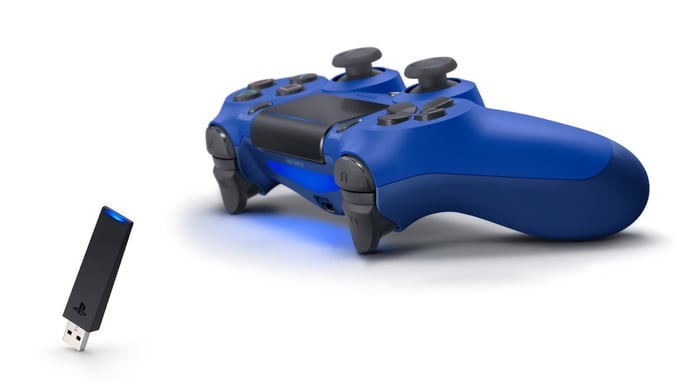The idea of playing video games on a cloud-based service was born in the early 2000s, but early innovators -- including G-cluster, Crytek, Gaikai, and OnLive -- struggled with bandwidth limitations. As internet speeds have improved, however, a "Netflix for video games" no longer seems like a pipe dream.
The basic idea was always to host a game remotely, then stream the gameplay back to the player via a high-resolution video. In theory, this would allow devices with modest specs -- like mobile devices, low-end PCs, and set-top boxes -- to play high-end games that usually require pricier hardware.

Image source: Getty Images.
That was easier said than done, since any degradation of a user's internet connection would result in severe lag. Moreover, companies needed to convince gamers to subscribe to games instead of buying digital downloads or physical copies.
Despite those challenges, the global cloud gaming market could grow from $649 million to $3.25 billion between 2016 and 2022, according to Research and Markets. Four big companies could be well-poised to profit from that growth: Sony (SONY 0.31%), NVIDIA (NVDA 3.65%), Microsoft (MSFT 1.65%), and HP (HPQ -0.11%).
The pioneer: Sony
Sony acquired Gaikai in 2012 and OnLive's patents in 2015. Gaikai's technology served as the foundation of its gaming as a service (GaaS) platform, PlayStation Now, which was launched in 2015. OnLive's patents were used to improve PS Now.
Sony initially had ambitious plans for PS Now, offering the service for PS3 consoles, the PS Vita, PlayStation TV, Sony Bravia TVs, Sony Blu-ray players, Samsung TVs, and Windows PCs. It also hinted that in addition to streaming PS3 and PS4 titles, the service would eventually offer PS1, PS2, and PSP games in the future.

Image source: Sony.
But last year, Sony narrowed down PS Now's focus and discontinued the service for all platforms except the PS4 and Windows PCs. It currently offers over 600 PS3 and PS4 games for those two platforms, making it the largest GaaS platform in the world. The service currently costs $20 per month, or $45 for three months.
Sony hasn't disclosed its number of PS Now subscribers, but the platform -- along with PSN and PS Plus -- could serve as the core pillars of its PlayStation ecosystem. PS Now shouldn't be confused with Remote Play, which lets gamers stream their PS4 games to other devices (like the PS Vita, PS TV, and Xperia devices) across their home network.
An evolving chipmaker: NVIDIA
NVIDIA's moves closely mirror Sony's. Its GameStream service, which is similar to Sony's Remote Play, lets gamers stream PC games from a GeForce-equipped PC to its Shield gaming tablets and set-top boxes.
NVIDIA's GeForce Now, which is similar to PS Now, is a subscription-based GaaS platform that streams high-end PC games to low-end PCs and Shield devices. The service was launched for Shield devices for $8 per month in 2015, while the PC and Mac version remains in a closed beta.
NVIDIA is investing in game streaming technologies to showcase its GeForce cards, Shield devices, and Tegra CPUs. They also give GeForce owners exclusive consumer-facing features which AMD -- NVIDIA's main rival in gaming GPUs -- doesn't offer.
A potential disruptor: Microsoft
Microsoft dabbled in local game streaming by letting Xbox One owners stream their games to Windows PCs. It also offers the Xbox Game Pass, a subscription service that lets gamers download (not stream) a selection of games to their consoles. Microsoft also uses its Azure cloud platform to stream assets from a growing list of games, including its upcoming shooter Crackdown and Ubisoft's tactical shooter Rainbow Six: Siege.

Microsoft's Crackdown. Image source: Microsoft.
Microsoft lacks a true GaaS platform like PS Now and GeForce Now. However, that could soon change with Microsoft's recent introduction of a dedicated cloud gaming unit led by company veteran Kareem Choudhry.
Choudhry hasn't disclosed any details about the unit's plans, but he boldly told The Verge that Microsoft's gaming platform could eventually "reach every one" of the two billion gamers worldwide.
An unexpected newcomer: HP
Microsoft will likely need to rely on major hardware partners like HP to reach that goal. However, HP has its own plans for the cloud gaming market. The world's top PC maker recently unveiled Omen Game Stream, which is similar to NVIDIA's GeForce Now.
Omen Game Stream uses Parsec's low-latency game streaming technology to stream high-end games to less powerful PCs, and will be bundled with new Omen gaming PCs. The service will be free for Omen owners -- which could help HP stay ahead of the pack in PC shipments.
The key takeaways
Cloud gaming is still a fledgling industry that will rely on technological improvements and a widespread shift in gaming habits. But if it's successful, it could render physical games, digital downloads, consoles, and high-end gaming PCs obsolete as gamers stream their games instead of buying them.





